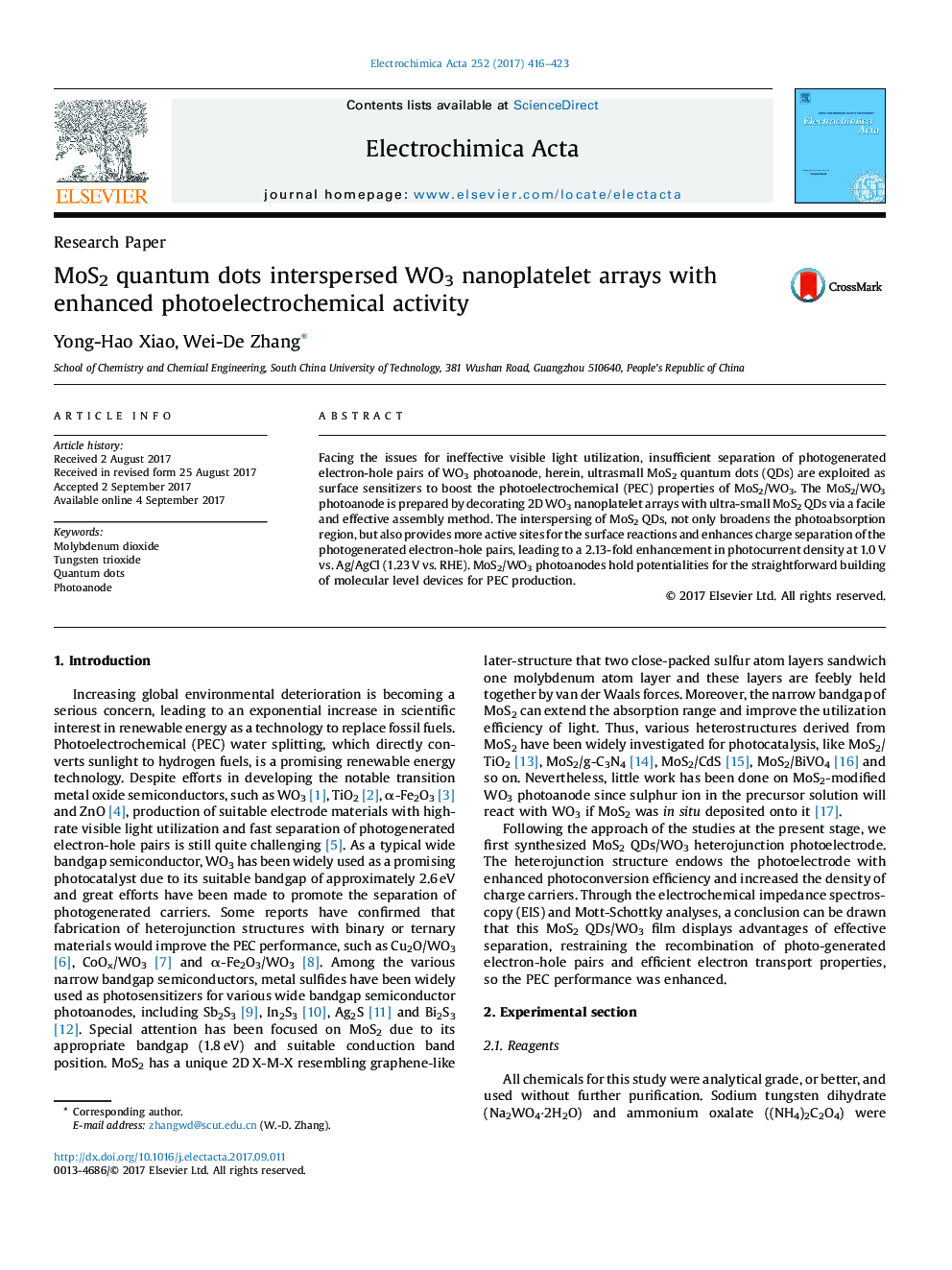| Article ID | Journal | Published Year | Pages | File Type |
|---|---|---|---|---|
| 6470327 | Electrochimica Acta | 2017 | 8 Pages |
â¢MoS2 QDs-modified WO3 nanoplatelet arrays photoanode was successfully fabricated.â¢Modification of MoS2 QDs on WO3 significantly enhanced the PEC activity.â¢Photogenerated electrons and holes are efficiently separated.â¢The absorption light region was broadened and more active sites were provided.
Facing the issues for ineffective visible light utilization, insufficient separation of photogenerated electron-hole pairs of WO3 photoanode, herein, ultrasmall MoS2 quantum dots (QDs) are exploited as surface sensitizers to boost the photoelectrochemical (PEC) properties of MoS2/WO3. The MoS2/WO3 photoanode is prepared by decorating 2D WO3 nanoplatelet arrays with ultra-small MoS2 QDs via a facile and effective assembly method. The interspersing of MoS2 QDs, not only broadens the photoabsorption region, but also provides more active sites for the surface reactions and enhances charge separation of the photogenerated electron-hole pairs, leading to a 2.13-fold enhancement in photocurrent density at 1.0Â V vs. Ag/AgCl (1.23Â V vs. RHE). MoS2/WO3 photoanodes hold potentialities for the straightforward building of molecular level devices for PEC production.
Graphical abstractMoS2 quantum dots-modified WO3 nanoplate arrays with high and stable photoelectrochemical activity under visible light were successfully prepared via a facile and effective assembly process. The modification of MoS2 QDs promotes the photoelectrochemical performance of WO3 toward water splitting.Download high-res image (186KB)Download full-size image
